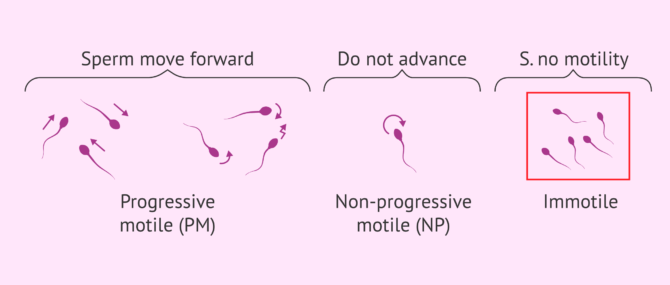When performing a basic semen study, sperm motility is an important parameter that can be decisive in the diagnosis and selection of the most appropriate treatment.
In terms of motility, three types of spermatozoa are determined: progressively motile (PM), non-progressively motile (NP) and immotile (IM). MPs are those spermatozoa that move and are mobile. NPs, on the other hand, refer to spermatozoa that are semi-motile, but are not able to move. Finally, immotile spermatozoa neither move nor are able to move.

According to the WHO, the MP should be higher than 32% and the sum of MP and NP higher than 40%. Samples with values below the reference values are diagnosed as asthenozoospermia.
Although a priori the motility criteria contemplate, on the one hand, progressive motility and, on the other, the sum of total motility (MP and NP), at the time of diagnosis only MP is taken into account, which must be greater than 32%. Therefore, if the percentage of motile spermatozoa in a sample is higher than 32%, it will be considered as normal motility.
When performing a basic semen study, sperm motility is an important parameter that can be decisive in the diagnosis and selection of the most appropriate treatment.
In terms of motility, three types of spermatozoa are determined: progressively motile (PM), non-progressively motile (NP) and immotile (IM). MPs are those spermatozoa that move and are mobile. NPs, on the other hand, refer to spermatozoa that are semi-motile, but are not able to move. Finally, immotile spermatozoa neither move nor are able to move.
According to the WHO, the MP should be higher than 32% and the sum of MP and NP higher than 40%. Samples with values below the reference values are diagnosed as asthenozoospermia.
Although a priori the motility criteria contemplate, on the one hand, progressive motility and, on the other, the sum of total motility (MP and NP), at the time of diagnosis only MP is taken into account, which must be greater than 32%. Therefore, if the percentage of motile spermatozoa in a sample is higher than 32%, it will be considered as normal motility.
However, it is important to emphasise that, for a correct diagnosis, days of abstinence should be limited to 2-7 days. Prolonged abstinence, longer than 7 days, may have a negative impact on some parameters, such as motility. The percentage of motile spermatozoa decreases as the days of abstinence increase, so it is essential to take this into account.
